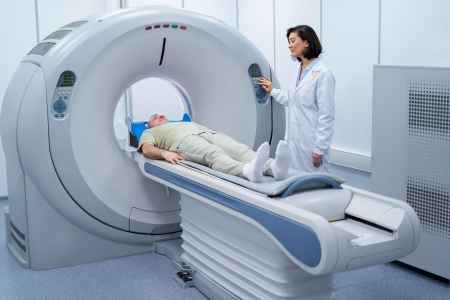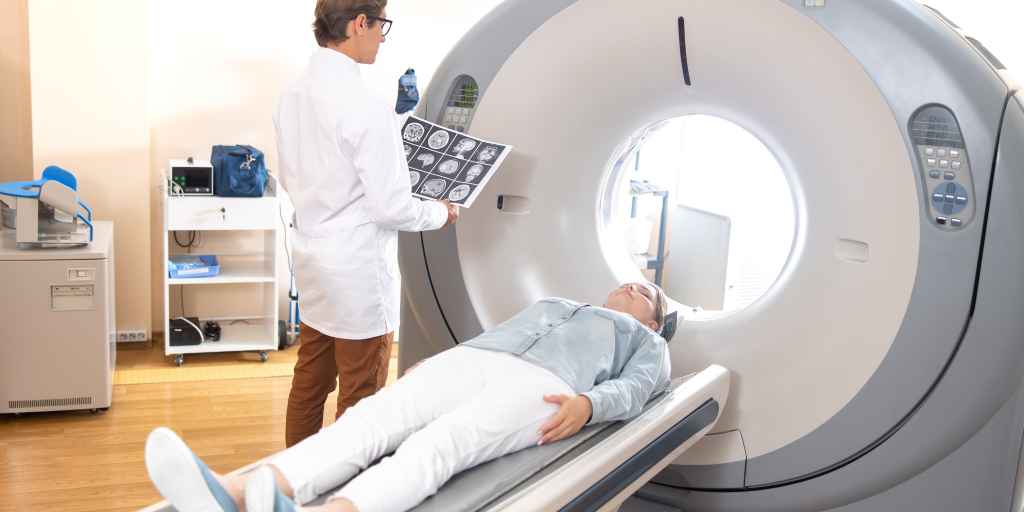Interventional Radiology (IR) is a rapidly evolving medical field that uses minimally invasive procedures to diagnose and treat a wide range of diseases and conditions. The field has seen tremendous advancements in recent years, with new techniques and technologies that allow for more precise and effective treatments with fewer complications.
One of the most significant advancements in IR is the use of image-guided procedures. This involves the use of advanced imaging techniques, such as computed tomography (CT) scans, magnetic resonance imaging (MRI), and ultrasound, to guide the placement of small instruments or catheters through tiny incisions in the skin. This allows IR specialists to perform a variety of procedures, including biopsies, drainages, and ablations, with greater accuracy and precision.
Another significant development in IR is the use of advanced tools and devices. For example, the use of robotic systems allows IR specialists to perform complex procedures with greater control and accuracy. Similarly, the development of microcatheters and micro-coils has allowed for treating even the smallest blood vessels, such as those in the brain.
IR has also seen significant progress in the treatment of cancer. The use of embolization, a technique that involves blocking the blood supply to a tumor, has been used to treat liver, lung, and kidney cancer, among others. Additionally, radioembolization, a technique that involves injecting tiny radioactive particles directly into a tumor, has shown promising results in the treatment of liver cancer.

Another area of progress in IR is the treatment of vascular disease. The use of stents, which are small metal mesh tubes that are placed inside blood vessels to help keep them open, has been used to treat conditions such as peripheral arterial disease and deep vein thrombosis. Similarly, the use of balloon angioplasty, which involves inflating a balloon inside a narrowed blood vessel to help restore blood flow, has been used to treat a variety of vascular conditions.
Advancements in the treatment of Chronic Pain
It can be caused by a wide range of factors, including injury, disease, or aging. For many years, the treatment of chronic pain has been limited to the use of medications, physical therapy, and surgical interventions. However, in recent years, there have been significant advancements in the treatment of chronic pain that have revolutionized the way this condition is managed.
One of the most significant advancements in the treatment of chronic pain is the development of high-frequency spinal cord stimulation (SCS). SCS is a minimally invasive procedure that involves implanting a small device under the skin that delivers electrical impulses to the spinal cord. These impulses block pain signals from reaching the brain, providing relief from chronic pain. High-frequency SCS is an improved version of traditional SCS, which uses lower-frequency electrical impulses that can cause discomfort or paresthesia in some patients. With high-frequency SCS, patients experience a more natural feeling of relief without any unpleasant sensations.
Another advancement in the treatment of chronic pain is the use of cooled radiofrequency ablation (C-RFA). This technique uses a cooled electrode to target and destroys nerves transmitting pain signals. C-RFA is a minimally invasive procedure that provides long-term pain relief without the need for surgery or medication. This technique has been used to treat a variety of chronic pain conditions, including arthritis, back pain, and complex regional pain syndrome (CRPS).
In addition to these advancements, there has been a growing interest in the use of regenerative medicine for the treatment of chronic pain. Regenerative medicine involves using the body’s own healing mechanisms to repair damaged tissues and reduce inflammation. Stem cell therapy and platelet-rich plasma (PRP) therapy are two examples of regenerative medicine techniques that are being used to treat chronic pain. These treatments involve injecting stem cells or platelets into the affected area to promote healing and reduce pain.
Finally, there has been a renewed focus on the use of non-invasive techniques for the treatment of chronic pain. This technique is non-invasive and can provide relief for a variety of chronic pain conditions, including back pain, arthritis, and neuropathic pain.
Various procedures in Interventional Radiology
Interventional Radiology (IR) is a medical distinctiveness that entails using minimally invasive strategies to diagnose and treat numerous sicknesses and conditions. Here are some of the various procedures commonly performed in interventional radiology:

- Angiography – This is a diagnostic procedure that involves the injection of contrast dye into blood vessels to visualize blockages or abnormalities.
- Angioplasty – This is a minimally invasive procedure used to treat narrowed or blocked blood vessels. A catheter with a balloon attached is inserted into the affected vessel and inflated to widen the vessel and improve blood flow.
- Embolization – This is a technique used to block blood flow to a certain area of the body, such as a tumor. This is typically done by injecting tiny particles or coils into the affected blood vessels.
- Radiofrequency ablation – This procedure involves the use of heat to destroy cancerous or other abnormal tissues. A needle is inserted into the affected area and a high-frequency electrical current is used to heat and destroy the tissue.
- Biopsy – This procedure involves the removal of a small sample of tissue from a suspicious area for analysis. This is often done using a small needle or catheter inserted into the affected area.
- Drainage – This is a technique used to remove fluid that has built up in an area of the body, such as a cyst or abscess. A catheter is inserted into the affected area to drain the fluid.
- Stent placement – This is a minimally invasive procedure used to treat narrowed or blocked blood vessels or other tubular structures in the body. A stent, which is a small, expandable metal or plastic tube, is inserted into the affected area to keep the vessel or structure open.
- Thrombolysis – This is a technique used to dissolve blood clots that have formed in blood vessels. A medication is injected into the affected vessel to break up the clot.
- Vertebroplasty and Kyphoplasty – These procedures involve the injection of bone cement into fractured vertebrae to stabilize them and relieve pain.
- Tumor Ablation – This procedure involves the use of heat, cold, or chemicals to destroy cancerous tumors without the need for surgery.
These are just some of the many procedures performed in interventional radiology. Advancements in technology and techniques continue to expand the range of conditions that can be treated through this minimally invasive approach.
Conclusion:
Advancements in interventional radiology have greatly enhanced the field and improved patient outcomes. The introduction of new techniques and technologies, such as advanced imaging, robotics, and targeted therapies, has enabled interventional radiologists to perform minimally invasive procedures with greater precision and accuracy. These techniques have allowed for faster recovery times, reduced hospital stays, and improved patient satisfaction.
Furthermore, ongoing research and development in interventional radiology promise to continue improving the field and expanding its capabilities. With these advancements, interventional radiology has become an increasingly important specialty in modern medicine, and it will likely continue to play a critical role in the diagnosis and treatment of a wide range of medical conditions.
FAQs
Q: What are some recent advancements in interventional radiology?
A: Recent advancements in interventional radiology include the use of artificial intelligence to improve the accuracy of image-guided procedures, the development of new minimally invasive techniques for treating tumors and other conditions, and the use of novel imaging modalities such as 3D printing and virtual reality.
Q: How has artificial intelligence impacted interventional radiology?
A: Artificial intelligence has the potential to improve the accuracy and efficiency of image-guided procedures by providing real-time feedback to the radiologist during the procedure. AI algorithms can also help to automate certain aspects of the procedure, such as identifying the optimal needle placement for a biopsy or injection.
Q: What are some new minimally invasive techniques being used in interventional radiology?
A: One example of a new minimally invasive technique is microwave ablation, which uses high-frequency microwave energy to destroy cancer cells. Another example is irreversible electroporation, which uses electrical pulses to create tiny holes in cancer cells, causing them to die.
Q: What types of imaging are used in IR?
A: Various types of imaging are used in IR including X-rays, ultrasound, computed tomography (CT), and magnetic resonance imaging (MRI).
Q: What are some common IR procedures?
A: Some common IR procedures include angioplasty, embolization, biopsy, drainage procedures, tumor ablation, and central venous access.




I’m truly enjoying the design and layout of your blog. It’s a very easy on the eyes which makes it much more pleasant for me to come here and visit more often. Did you hire out a developer to create your theme? Superb work!
Thank you for such kind words my friend. No I haven’t hire a developer, I have developed this website on my own and I use Ocean WP theme.